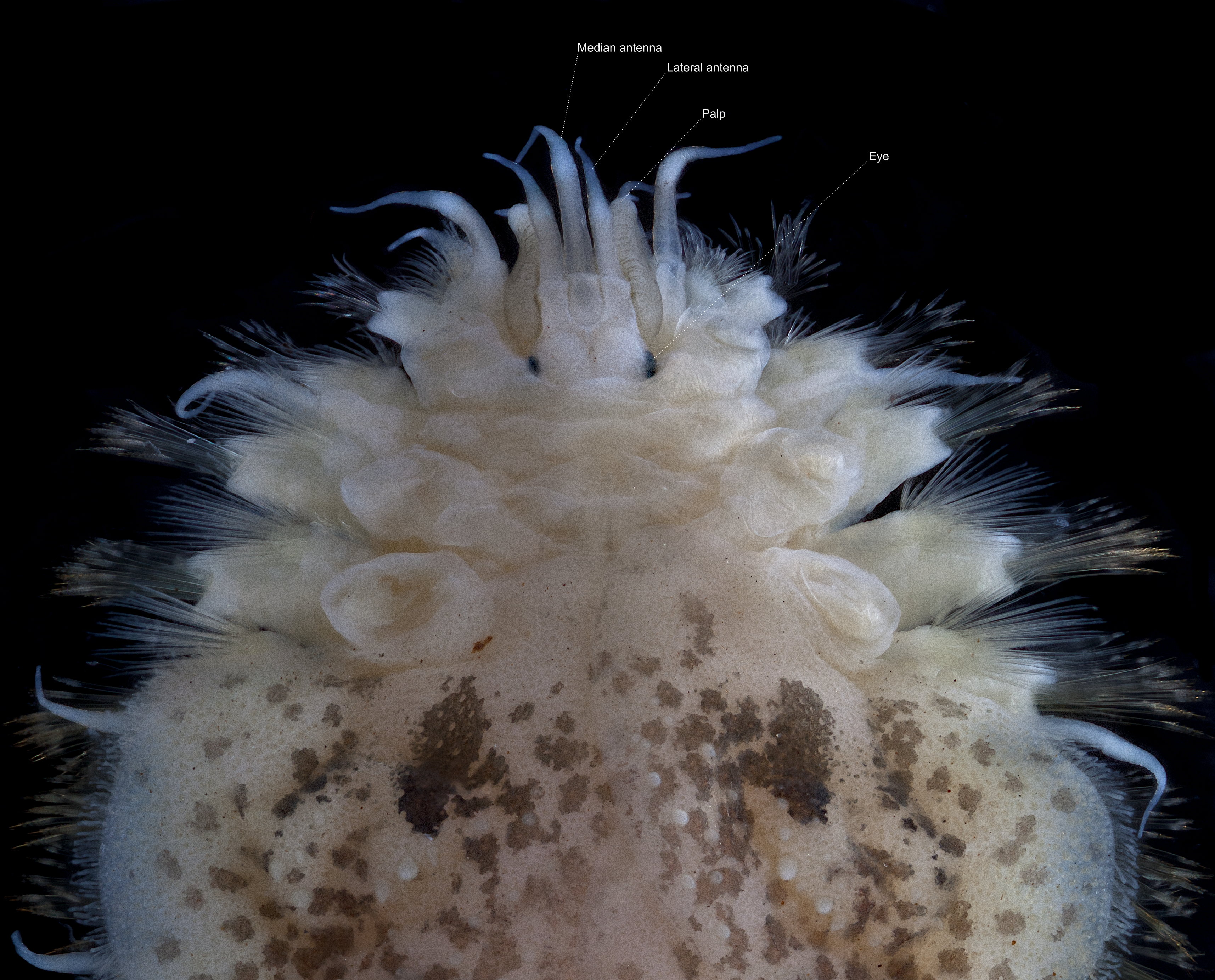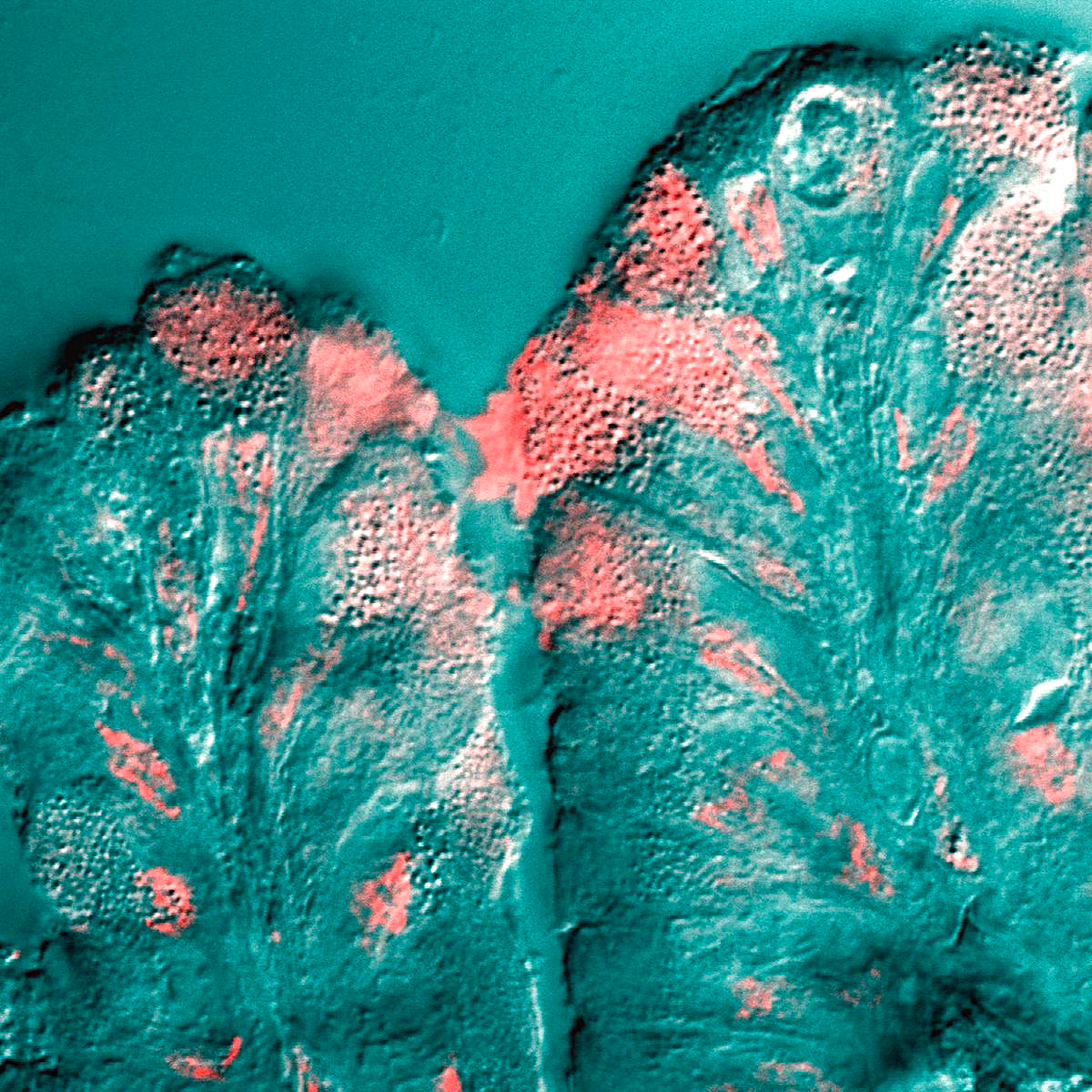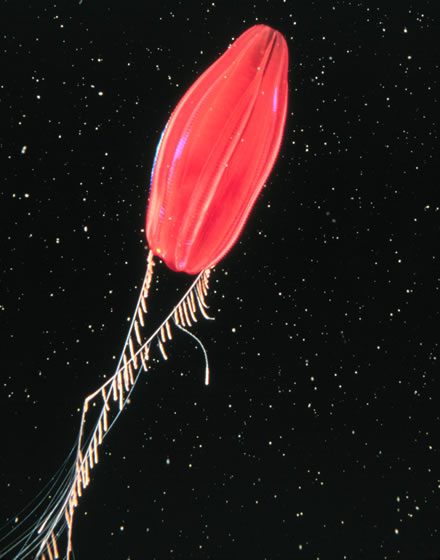|
Poecilochaetus Serpens
''Poecilochaetus serpens'' is a species of marine polychaete worm in the family Poecilochaetidae. It is a benthic worm that burrows into soft sediment. Taxonomy and habitat The British marine biologist Edgar Johnson Allen first described this worm in 1904, giving it the name ''Poecilochaetus serpens''. It was originally found buried in the sand of a beach near Plymouth, England, at extreme low water of a spring tide; the shore here consists of patches of ''Zostera'' seagrass separated by patches of bare sand, and the worm was only ever found in the bare sand areas, nor was it ever found in other habitats near Plymouth. The specific name was chosen because when they were swimming, both the worm and its planktonic larva were continually wriggling. Description This segmented worm is long and slender. For example, a worm with 110 segments was in length and in width, exclusive of appendages. The prostomium (head) has a single tentacle ventrally. Behind the head are two long p ... [...More Info...] [...Related Items...] OR: [Wikipedia] [Google] [Baidu] |
Edgar Johnson Allen
Edgar Johnson Allen (6 April 1866 – 7 December 1942) was a British marine biologist. He was elected a Fellow of the Royal Society in 1914 and won the Gold Medal of the Linnean Society in 1926 and the Royal Society's Darwin Medal in 1936. Allen was the fifth Director of the Marine Biological Association of the United Kingdom in Plymouth, serving from 1894 to 1936. The citation for his Darwin Medal The Darwin Medal is one of the medals awarded by the Royal Society for "distinction in evolution, biological diversity and developmental, population and organismal biology". In 1885, International Darwin Memorial Fund was transferred to the ... reads ''In recognition of his long continued work for the advancement of marine biology, not only by his own researches but by the great influence he has exerted on very numerous investigations at Plymouth''. References External links Darwin Medal at The Royal Society 1866 births 1942 deaths 20th-century British biologists ... [...More Info...] [...Related Items...] OR: [Wikipedia] [Google] [Baidu] |
Prostomium
The prostomium (From Ancient Greek, meaning "before the mouth"; plural: prostomia; sometimes also called the "acron") is the cephalized first body segment in an annelid worm's body at the anterior end. It is in front of (but does not include) the mouth, being usually a small shelf- or lip-like extension over the dorsal side of the mouth. The prostomium together with the peristomium, which includes the mouth and pharynx, make up the annelid head. Description The prostomium is part of the head and holds at least part of the brain and often bears sensory structures such as the eyes, antennae and palps. It may function like a kind of overlip when the animal is feeding. The prostomium bears many important taxonomic characters and its shape and composition are important for annelid systematics. In addition to the eyes, antennae and palps, the prostomium can possess appendages such as tentacles or cirri. Moreover, some polychaete Polychaeta () is a paraphyletic class of gener ... [...More Info...] [...Related Items...] OR: [Wikipedia] [Google] [Baidu] |
Canalipalpata
Canalipalpata, also known as bristle-footed annelids or fan-head worms, is an order of polychaete worms, with 31 families in it including the suborder Sabellida (families Serpulidae (tubeworms) and Sabellidae (fanworms and feather duster worms) and the Alvinellidae, a family of deep-sea worms associated with hydrothermal vents. The Canalipalpata have no teeth or jaws. Most are filter feeders. They have grooved palpi, which are covered in cilia. These cilia are used to transport food particles to the mouth. However, the cilia and grooves have been lost in the Siboglinidae family. Fossil record The earliest known member of the Canalipalpata is '' Terebellites franklini'', which was found in the Clouds Rapids Formation of Newfoundland, and dates from the mid Cambrian (St David's series). Use in aquaria Many species of Canalipalpata are visually attractive. Fanworms and Christmas tree worms (a type of serpulid) are recommended as species for beginners to keep in a marine aqua ... [...More Info...] [...Related Items...] OR: [Wikipedia] [Google] [Baidu] |
Diatom
A diatom (New Latin, Neo-Latin ''diatoma''), "a cutting through, a severance", from el, διάτομος, diátomos, "cut in half, divided equally" from el, διατέμνω, diatémno, "to cut in twain". is any member of a large group comprising several Genus, genera of algae, specifically microalgae, found in the oceans, waterways and soils of the world. Living diatoms make up a significant portion of the Earth's Biomass (ecology), biomass: they generate about 20 to 50 percent of the oxygen produced on the planet each year, take in over 6.7 billion metric tons of silicon each year from the waters in which they live, and constitute nearly half of the organic material found in the oceans. The Protist shell, shells of dead diatoms can reach as much as a half-mile (800 m) deep on the ocean floor, and the entire Amazon basin is fertilized annually by 27 million tons of diatom shell dust transported by transatlantic winds from the African Sahara, much of it from the Bodélé Dep ... [...More Info...] [...Related Items...] OR: [Wikipedia] [Google] [Baidu] |
Mucus
Mucus ( ) is a slippery aqueous secretion produced by, and covering, mucous membranes. It is typically produced from cells found in mucous glands, although it may also originate from mixed glands, which contain both serous and mucous cells. It is a viscous colloid containing inorganic salts, antimicrobial enzymes (such as lysozymes), immunoglobulins (especially IgA), and glycoproteins such as lactoferrin and mucins, which are produced by goblet cells in the mucous membranes and submucosal glands. Mucus serves to protect epithelial cells in the linings of the respiratory, digestive, and urogenital systems, and structures in the visual and auditory systems from pathogenic fungi, bacteria and viruses. Most of the mucus in the body is produced in the gastrointestinal tract. Amphibians, fish, snails, slugs, and some other invertebrates also produce external mucus from their epidermis as protection against pathogens, and to help in movement and is also produced in ... [...More Info...] [...Related Items...] OR: [Wikipedia] [Google] [Baidu] |
Cirrus (biology)
In biology, a cirrus , plural ''cirri'', , (from the Latin ''cirrus'' meaning a ''curl-like tuft or fringe'') is a long, thin structure in an animal similar to a tentacle but generally lacking the tentacle's strength, flexibility, thickness, and sensitivity. In the sheep liver fluke, for example, the ''cirrus'' is the worm's muscular penis and when not in use is retained within a ''cirrus sac'' or ''pouch'' near the animal's head. The same structure exists in the various ''Taenia'' species of tapeworm. In the clam worms, however, the cirrus is the tentacular process or growth on each of the feet (''parpodia''), either the ''dorsal cirrus'' or the ''ventral cirrus'', and has nothing to do with reproduction. Among the bristleworms, a cirrus is a tentacular growth near the head or notopodium containing sense organs and may be either dorsal, ventral, or lamellar. Among the ribbonworms, the ''caudal cirrus'' is a small thread-like growth at the posterior end of the worm. ... [...More Info...] [...Related Items...] OR: [Wikipedia] [Google] [Baidu] |
Chaeta
A chaeta or cheta (from Greek χαίτη “crest, mane, flowing hair"; plural: chaetae) is a chitinous bristle or seta found in annelid worms, (although the term is also frequently used to describe similar structures in other invertebrates such as arthropods). Polychaete annelids, ('polychaeta' literally meaning "many bristles") are named for their chaetae. In Polychaeta, chaetae are found as bundles on the parapodia, paired appendages on the side of the body. The chaetae are epidermal extracellular structures, and clearly visible in most polychaetes. They are probably the best studied structures in these animals. Use in taxonomy and identification The ultrastructure of chaetae is fundamentally similar for all taxa but there is vast diversity in chaetal morphology. Moreover, chaetae bear precise characters for determination of species and taxonomic assessment. The shape, absolute and relative size, number, position, ornamentation and type are important taxonomic characters ... [...More Info...] [...Related Items...] OR: [Wikipedia] [Google] [Baidu] |
Parapodium
In invertebrates, the term parapodium ( Gr. ''para'', beyond or beside + ''podia'', feet; plural: parapodia) refers to lateral outgrowths or protrusions from the body. Parapodia are predominantly found in annelids, where they are paired, unjointed lateral outgrowths that bear the chaetae. In several groups of sea snails and sea slugs, 'parapodium' refers to lateral fleshy protrusions. __TOC__ Annelid parapodia Most species of polychaete annelids have paired, fleshy parapodia which are segmentally arranged along the body axis. Parapodia vary greatly in size and form, reflecting a variety of functions, such as gas exchange, anchorage, protection and locomotion. General description Parapodia in polychaetes can be uniramous (consisting of one lobe or ramus) but are usually biramous (two lobes or rami). In the latter case, the dorsal lobes are called notopodia and the ventral lobes neuropodia. Both neuropodia and notopodia may possess a bundle of chaetae (neurochaetae and notoch ... [...More Info...] [...Related Items...] OR: [Wikipedia] [Google] [Baidu] |
Peristomium
The peristomium is the first true body segment in an annelid worm's body in the anterior end. It is directly behind the prostomium and contains the mouth, tentacular cirri, and sometimes feeding palps, which may instead occur on the prostomium. If an eversible pharynx is present, it is contained in this segment as well, and can fill up to 20 segments when inverted, depending on the species. The prostomium and peristomium can be variously fused, either completely distinct, or comprising a joint structure of a peristomial ring and a tentacular crown. See also *Prostomium The prostomium (From Ancient Greek, meaning "before the mouth"; plural: prostomia; sometimes also called the "acron") is the cephalized first body segment in an annelid worm's body at the anterior end. It is in front of (but does not include) th ... * Pygidium References {{Reflist Annelid anatomy ... [...More Info...] [...Related Items...] OR: [Wikipedia] [Google] [Baidu] |
Tentacle
In zoology, a tentacle is a flexible, mobile, and elongated organ present in some species of animals, most of them invertebrates. In animal anatomy, tentacles usually occur in one or more pairs. Anatomically, the tentacles of animals work mainly like muscular hydrostats. Most forms of tentacles are used for grasping and feeding. Many are sensory organs, variously receptive to touch, vision, or to the smell or taste of particular foods or threats. Examples of such tentacles are the eyestalks of various kinds of snails. Some kinds of tentacles have both sensory and manipulatory functions. A tentacle is similar to a cirrus, but a cirrus is an organ that usually lacks the tentacle's strength, size, flexibility, or sensitivity. A nautilus has cirri, but a squid has tentacles. Invertebrates Molluscs Many molluscs have tentacles of one form or another. The most familiar are those of the pulmonate land snails, which usually have two sets of tentacles on the head: when e ... [...More Info...] [...Related Items...] OR: [Wikipedia] [Google] [Baidu] |
Plankton
Plankton are the diverse collection of organisms found in water (or air) that are unable to propel themselves against a current (or wind). The individual organisms constituting plankton are called plankters. In the ocean, they provide a crucial source of food to many small and large aquatic organisms, such as bivalves, fish and whales. Marine plankton include bacteria, archaea, algae, protozoa and drifting or floating animals that inhabit the saltwater of oceans and the brackish waters of estuaries. Freshwater plankton are similar to marine plankton, but are found in the freshwaters of lakes and rivers. Plankton are usually thought of as inhabiting water, but there are also airborne versions, the aeroplankton, that live part of their lives drifting in the atmosphere. These include plant spores, pollen and wind-scattered seeds, as well as microorganisms swept into the air from terrestrial dust storms and oceanic plankton swept into the air by sea spray. Though m ... [...More Info...] [...Related Items...] OR: [Wikipedia] [Google] [Baidu] |
Species
In biology, a species is the basic unit of Taxonomy (biology), classification and a taxonomic rank of an organism, as well as a unit of biodiversity. A species is often defined as the largest group of organisms in which any two individuals of the appropriate sexes or mating types can reproduction, produce Fertility, fertile offspring, typically by sexual reproduction. Other ways of defining species include their karyotype, DNA sequence, morphology (biology), morphology, behaviour or ecological niche. In addition, paleontologists use the concept of the chronospecies since fossil reproduction cannot be examined. The most recent rigorous estimate for the total number of species of eukaryotes is between 8 and 8.7 million. However, only about 14% of these had been described by 2011. All species (except viruses) are given a binomial nomenclature, two-part name, a "binomial". The first part of a binomial is the genus to which the species belongs. The second part is called the specifi ... [...More Info...] [...Related Items...] OR: [Wikipedia] [Google] [Baidu] |

.jpg)

.jpg)




